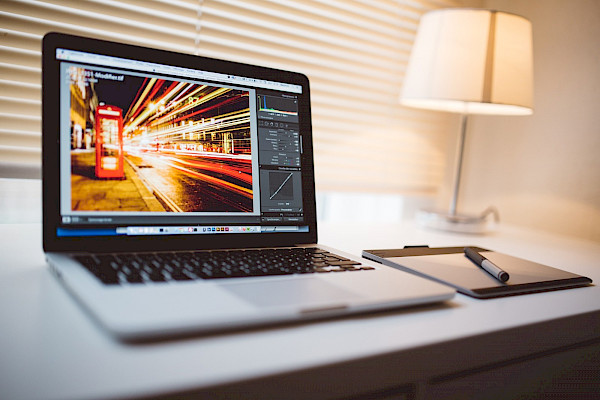
Most Common Mistakes in Screencasting - Part 2
 Screen Recording Software
Screen Recording Software
People often wonder what screencasting tools are available, and how to decide on one or the other. Although some tools are already mentioned in the article Screencasting: How to Start, Tools and Guidelines, I want to make a short addendum to this list. Since the release of Snow Leopard, QuickTime Player is also capable of recording the screen. Although it leaves an icon in the top-right of the screen, this is probably the cheapest solution.
Using simple “screen-record-only” software has the downside that you need to find other software to edit your video; this means, again, a bit more time and effort. If someone wants to take screencasting more seriously, I would recommend ScreenFlow or Camtasia. Both are well equipped “editing-and-recording-all-in-one” solutions able to handle everything needed for a good screencast. They have layers, editing tools, callout functionality and more. Most screencasters edit on ScreenFlow or an equivalent before exporting the video to Apple Final Cut or Adobe Premiere, where lower-thirds, transitions or a table of contents are added (this is the workflow of Don McAllister, for example).
Animations (Using Zooms, Pans and Callouts)
A common mistake among screencast newbies is not to make use of the zoom and pan functions. While I recommend their use, there is a slight difference between using and overusing.
Zoom
New screencasters often don’t use zoom [2] at all, but don’t be afraid to zoom in to show something with bigger detail. In a standard ten-minute screencast, often all I see is someone else’s screen; a moving cursor is all that changes, or maybe some windows pop open or a checkbox gets ticked. Wouldn’t you feel totally bored watching a moving mouse cursor move for ten minutes? I have had clients saying they want exactly that. Honestly, although I usually enjoy hearing myself talk, watching such screencasts makes me sleepy.
So, make use of the zoom function to make a screencast a bit more exciting. Zoom in on a detail, talk about that function, and then zoom out or pan to the next function. That way people see a more dynamic visual change, which creates interest and holds peoples’ attention. As with other things, like callouts, this function should be used wisely: not wherever possible, but wherever useful.
Pan
While zoomed in on a detail, the audience can’t see everything outside the cutout. Pans are useful to move the “camera” around — while remaining zoomed in! I use pans when my (mouse) cursor is about to move out of a cutout area. I try to move the camera along with the mouse pointer; that way the pan action looks very natural and seem to make more “sense” instead of moving the camera first, and then the mouse.
As a rule of thumb, choose the solution you think makes more sense to a person watching your screencast. Always consider the audience! Standard pan lengths, as well as standard zoom lengths, can get annoying as they are very repetitive. Professional screencasting applications allow you to customize the length of an action. Make use of that possibility!
Callouts
As an example of what not to do, a common mistake is to have the checkbox in ScreenFlow which says “Show modifier keys when pressed” enabled during the entire screencast. Another checkbox says to display mouse-clicks as Radar, or to make clicks audible. These options are not bad, but again, overusage is not a good thing; people intuitively know that when a window comes to the foreground, someone must have clicked on it, so why bother them with a stupid effect?
On the other hand, when saying something like: “…and when this checkbox is enabled, the app automatically does such-and-such…”, it’s a good idea to turn on visual click effects. Split the clip before the click happens, then split the clip afterwards, and enable click effects for this new separate clip. Done! Probably the best tip for you: use effects to support your explanations, not as something fancy to have. When I realized this, it changed my whole way of doing screencasts.
Overlays And Lower-Thirds
When all the edits are made, it’s a wise idea to add a bit more of that extra magic to the video such as a table of contents or lower-thirds. The options here are wide open. Although professional apps like Camtasia offer mandatory support for animations, they are no power houses in that regard. Try to find another application to create those overlays and import them to your screencast.
An animation program needs to be capable of producing transparent movies, which are added as a separate layers on top of the screencast. I create mine with Keynote, which can export transparent movies using the Share function. Go to Share, then Export, then select custom in the Formats drop-down menu. Make sure to enable Include transparency. I use the Apple Animation codec for exporting.
Apart from Keynote or even Linux software, and if you want to invest a bit more money, Apple Final Cut Pro’s Motion; Adobe After Effects; Red5, and a lot of other programs are specialized for creating these effects. Most screencasters I know use the Apple Final Cut Pro Suite, where Motion is included. Others stick with After Effects. Both are professional, advanced tools.
Recording Equipment
The audio quality of a screencast is often determined by the hardware used. Many people use their built-in microphone on a laptop, which is fine most of the time but has several downsides:
- People will hear you typing and clicking.
- The recording will have more hiss, because of the poor microphone quality.
- The recording will have more ambient sound (such as a printer printing, the phone ringing, the wind blowing or a car honking).
Buying a good microphone is another steep investment, but it’s definitely a good one that adds a lot of value to your recording equipment. Sure, for me as an audio engineer, it’s quite easy to pick the right set of equipment. But newcomers often have problems with this. The good news is that most screencasts don’t need high quality recording equipment. There are dynamic and diaphragm microphones to choose from; in my opinion, it is usually better to buy a diaphragm microphone, although it picks up more ambient noise. Dynamic microphones are less sensitive to accidental “pops” or other unwanted noise, but sound less clear and clean.
I ended up buying a USB microphone that has an amplifier built-in, so it doesn’t need any other special equipment; dynamic microphones usually need a separate amplifier. I know some screencasters who buy “stand” microphones, which they attach to a freely movable arm that is attached to the wall. That way, they can move their microphone around and always have a good position to their microphone.
Placing a microphone is quite easy. I would recommend not putting the microphone directly in front of you, as some vowels (like “p” or “t”) can “pop” the microphone, resulting in a distorted recording. Most recording microphones have a cardioid polar pattern that records well when sound comes from the front, but is less sensitive to sound from the side and the back. As humans, we are orbital emitters which means that for us, speaking into a microphone placed to the side of our mouths sounds equally good as speaking directly into it. The only difference is that the “p” and “t” sounds don’t influence the diaphragms’ movement, because all of the sonic energy doesn’t go in the microphone’s direction. [3]
Some screencasters, like me, prefer headset microphones as they are always the right distance to the mouth. A possible downside of professional diaphragm headset microphones, however, might be the need for a separate audio interface. Fortunately, mine wasn’t that expensive; I’m using a MiPRO MU-55HN.
I can’t recommend buying microphones that just “look good,” such as those blue-light emitting microphones. Low price usually means low quality. I suggest going into a professional music shop to ask for help, as they have enough experience to sell you the right microphone — perhaps an even cheaper and better one — than the amateur shops would.
Recording Studio
How do you choose an appropriate recording studio? Some people record their screencasts in their offices, which have bare walls; this makes the recording sound equally “bare,” like you have recorded in a washroom. There’s nothing you can do about that, except by putting more stuff on the walls and desks. Placing “reflecting material” helps the sonic waves spread across the room, resulting in better audio quality. The recorded voice will always sound like the room it has been recorded in. If it shouldn’t sound like your office, don’t record there! It’s simple as that! Spend one or two hours in a different venue getting your audio recording right, and then move back into your office for editing. It’s really worth it!
Summary
This article gives you a brief overview of some of the most common mistakes screencasting beginners make. I have great hopes now of seeing fewer screencasts recorded with a mobile phone! I tried to explain how to use zoom and pan more effectively and how to emphasize different portions of a screencast; we discussed that click effects, or keyboard-shortcut-overlays, should only be used wherever helpful, not wherever possible. Some of you may have decided to acquire additional or new gear for your recording equipment collection. And of course, choosing the right place to record your audio is the final icing on your screencasting cake.
The above was concluding part of the article 'Most Common Mistakes in Screencasting - Part 1' published on 13/12/2010
The above was originally published at: http://www.smashingmagazine.com/2010/12/09/most-common-mistakes-in-screencasting/
